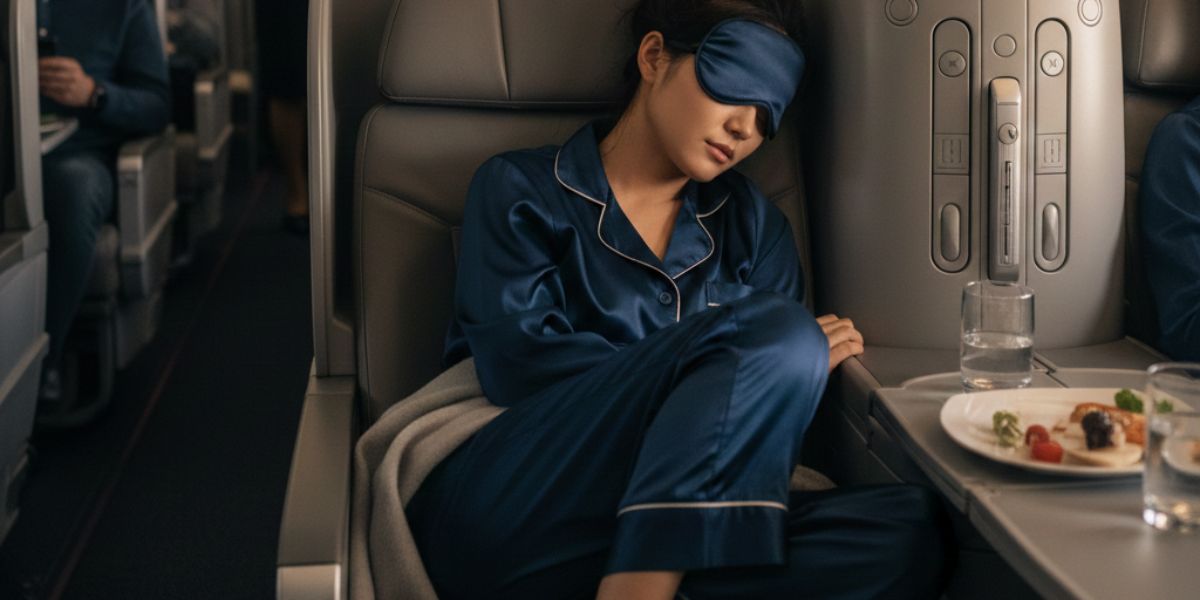A frankly cheeky challenge has flown across the Pacific from the United States, raising an issue many air travellers have quietly pondered: are we sacrificing courtesy for comfort at 35,000 feet? The concept, kick-started by a call from the U.S. Transportation Secretary to ditch the pyjamas and slippers, aims to bring a new level of civility back to air travel.
But what may start as a debate over dressing ‘with some respect’ quickly becomes a more global argument about freedom, psychology, and the escalating chaos onboard planes worldwide.
The Rising Tide of Unruly Behaviour
While the initial headline came from the U.S., the underlying problem of unruly passengers is far from isolated. Internationally, the rate of disturbances, ranging from verbal abuse and non-compliance with crew instructions to outright violence, has surged post-pandemic. In the U.S., the Federal Aviation Administration (FAA) reported a staggering 400% increase in in-flight disturbances compared to pre-2019 levels.
The Australian experience, while often less publicised with broad statistics, tells a similar story of escalating tension and disruption. The Australian Federal Police (AFP), responsible for security at major airports, reported responding to more than 22,000 incidents at designated airports in the 2023-24 financial year alone. These incidents cover a spectrum from offensive behaviour to more serious offences. Australian airlines have consistently dealt with cases severe enough to require diversions and police removal of passengers, with major airlines estimating they manage a consistent number of incidents monthly.
Whether in Sydney or Seattle, the aviation industry faces an environment where stress, frustration over delays (Australian flight disruptions were reportedly 300% higher than in 2019), and aggressive passenger behaviour are creating a difficult environment for crew and travellers alike.

Why Dressing Up Could Calm Us Down
In this climate of airborne angst, the argument for dressing with intention gains psychological weight. The proponents of ditching the loungewear don’t just see a fashion faux pas; they see a behavioural cue.
Etiquette experts champion the idea that one’s clothing should be reserved for the appropriate context. Simply put: the airport is a public terminal, not a private bedroom. More importantly, they point to enclothed cognition, the psychological concept that what we wear actively influences our behaviour, attitude, and how we interact with the world.
If you don a sharp shirt and jeans rather than faded track pants and Ugg boots, the theory suggests you subconsciously project and demand a higher level of respect, leading to more patient and courteous behaviour towards flight attendants and fellow passengers. You’re less likely to treat the cabin like your personal living room if you’re not dressed for a nap.
This idea is already embraced on the ground by Australian carriers. While there is generally no strict dress code to board a flight, Qantas and Virgin Australia enforce a “smart casual” dress standard in their airport lounges. Items like dirty activewear, head-to-toe gym wear, bare feet, and sleepwear are typically banned from the premium space. So if you want a premium experience, you need to present with premium conduct.
The Unbreakable Right to Comfort
However, the counter-argument is fierce and highly relatable, especially for Australians facing marathon international flights. For a 14-hour haul to Europe or the Americas, comfort is not a frivolous desire; it’s a necessary tool for survival. Restrictive clothing can exacerbate jet lag and stress, turning an uncomfortable journey into a truly miserable one.
For many, wearing soft, elasticised clothing is a completely practical choice. It speaks to the changing nature of travel: the glamour of the 1960s is long gone, replaced by squeezed seating and heightened security. Why should a passenger suffer in tailored clothes when the airline won’t commit to a comfortable seat?
Furthermore, the connection between pyjamas and poor behaviour is tenuous. Is a traveller wearing a designer silk sleep set (a trend popularised by celebrities like Rihanna) genuinely less civil than one wearing clean, standard casual attire? For many, the focus is entirely misplaced. The debate should target intoxication, non-compliance, and abusive conduct, not personal style.
Ultimately, the global conversation forces travellers to confront the social contract of air travel. Does the freedom to wear what you want override the collective need for a civil, shared environment? The jury remains firmly grounded on this one.









